It’s important to realize that hand to face contact is a serious avenue of infection spread which is best addressed by frequent hand washing and avoiding face touching. However, the Coronavirus can spread through the air, through aerosols or contaminated dust particles.
Early on in the pandemic, experts were adamant that masks were not effective in protecting people against the Coronavirus unless you were sick and trying to protect others.
Not entirely correct. My previous article on that topic noted that — at the very least — masks would help remind healthy people not to touch their faces and would prevent and mouth contact.
But there’s more.
Surgical masks protect other people (not you so much)
Surgical masks are less about protecting yourself from Coronavirus or other pathogens. That’s because they are designed to keep a surgeon or other health professional from infecting their patients. Surgical and similar masks are specifically designed to trap contamination before those can spread.
UPDATE March 28, 2020: This well-written article by the New York Times cites a number of credible sources on the value of surgical-type masks, but emphasizes the superior protecti0n fro0m N95 masks.
The N95 is your friend…and protects others as well
The National Institute for Occupational Safety and Health (NIOSH) particulate respirator certification has a program to measure and approve personal filter products including those that screen out ultrafine particles such as bacteria and viruses: NIOSH-Approved Particulate Filtering Facepiece (PFF) Respirators.
This ad-free article is made possible by the financial support of the
Center for Research on Environmental Chemicals in Humans: a 501(c)(3) non-profit.
Please consider making a tax-deductible donation for continued biomedical research.
The most common type is N95 which must filter at least 95% of airborne particles larger than 0.3 microns (millionths of a meter). In reality, they even do an excellent job on even smaller particles.
To visualize microns, think of your local air quality district. They track a particularly hazardous particle size — PM2.5 — which focuses on particles of 2.5 microns or less
Particles that size and smaller are particularly hazardous because they can travel into the deepest parts of the lungs where they can pass immediately into the bloodstream.
How well do these masks filter out viruses?
Remarkably well!
Research shows that an N95 mask will filter more than 95% of particles including 90%+ of the ultra-fine ones that include viruses that are smaller than the CARS-CoV-2 Coronavirus that causes COVID-19.
This study — Filter Performance of N99 and N95 Facepiece Respirators Against Viruses and Ultrafine Particles — tested N95 and N99 masks against three relatively harmless viruses. They found that the N95 performed almost as well as the N99.
Significantly, one of those viruses — the MS2 bacteriophage — is a lot smaller than the CARS-CoV-2 Coronavirus which has an elliptical shape that measures approximately 0.06–0,140 microns. (A bacteriophage is a virus that attacks bacteria. The MS2 infects e. coli)
By comparison, the MS2 bacteriophage virus is smaller, with a particle size range of 0.023–0.028 microns. The Ms2’s smaller size offers a solid stress test of the N95’s filtering ability beyond its rated specifications.
That study noted that the MS2 bacteriophage virus and the CARS-CoV-2 Coronavirus are somewhat different in shape, and this could have influenced the filtering properties.
However, the results indicate that even the N95 masks meet or exceed the 95% filtering specification at normal breathing rates which are substantially lower than the 30 liters/minute level noted in the diagram, above.
Breathing rate affects filtering ability
Remaining calm and breathing slowly will provide better filtering and help reduce leakage around the edges of the mask.
Tight facial seal is vital
It’s important to note that, while the N95 is far superior in filtering, this study indicates that a proper seal with the face is vital to reduce leakage from around the edges.
Beards are a no-no. This Journal of Hospital Infection study found that: “Adequate respirator fit decreased significantly with increasing facial hair … [N]o full-bearded HCWs achieved a fit.”
Aerosols
An N95 mask is especially vital to guard against the Coronavirus that can remain infectious in the air for three hours after a sneeze, a cough, or because some sweeping or mechanical action stirs up the virus. Those floating collections of particles in the air are known as aerosols.
A dust cloud is a familiar visible (and dry) aerosol.
Another familiar (and unwelcome) aerosol includes the moist droplet cloud from a thoughtless person’s uncovered sneeze that could contain bacteria or viruses.
These sorts of aerosols are very effective in spreading disease (or medicine) because they are easily inhaled.
In addition, the water-based droplets adhere very efficiently to moist mucus membranes in the mouth, eyes, nose, throat and lungs.
This earlier study dealing with the Influenza Virus explained the range of aerosols:
- Large droplets, greater than 50 microns in diameter,settle on the ground almost immediately.
- Intermediate-sized droplets 10–50 microns settle within several minutes.
- Small particles, less than 10 microns, including droplet nuclei from evaporated larger particles, can remain airborne for hours and are easily inhaled deep into the respiratory tract
- Influenza virus RNA was found in the exhaled breath of patients and found that more than 99% of exhaled particles were less than 5 microns in diameter.
- Influenza virus may be contained in fine particles generated during tidal (normal) breathing.
Aerosols eventually land on a surface such as a table, floor, product in a store, other people and myriad other possibilities. Often, the particles and viruses get stirred up again and again.
Note
If you have an N95 or higher mask because you previously obtained them for work in dusty places or tasks like spray painting and welding that create tiny hazardous particles, then use it for COVID-19 protection.
Do not go out and try to buy one of the scarce masks needed by health professionals or first responders. Unless you have a mask that is new and sealed, it may not be a suitable donation.
References
- CDC: Generation and Behavior of Airborne Particles (Aerosols): pdf
- How Does Breathing Frequency Affect the Performance of an N95 Filtering Facepiece Respirator and a Surgical Mask Against Surrogates of Viral Particles?
- New coronavirus stable for hours on surfaces (Summary)
- Aerosol and Surface Stability of SARS-CoV-2 as Compared with SARS-CoV-1 (full study) + Supplementary Appendix
- Influenza Virus Aerosols in the Air and Their Infectiousness
- Performance of an N95 Filtering Facepiece Particulate Respirator and a Surgical Mask During Human Breathing: Two Pathways for Particle Penetration
- Interim Infection Prevention and Control Recommendations for Patients with Suspected or Confirmed Coronavirus Disease 2019 (COVID-19) in Healthcare Settings
- Features, Evaluation and Treatment Coronavirus (COVID-19
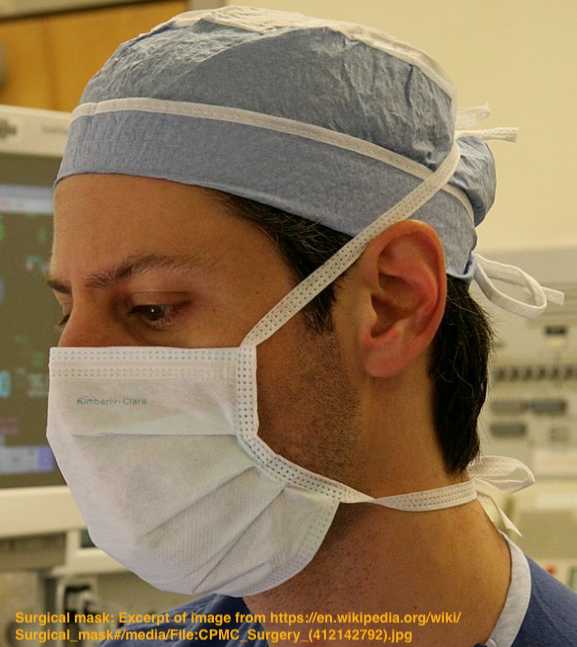
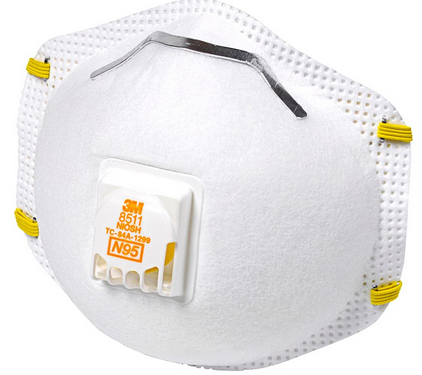
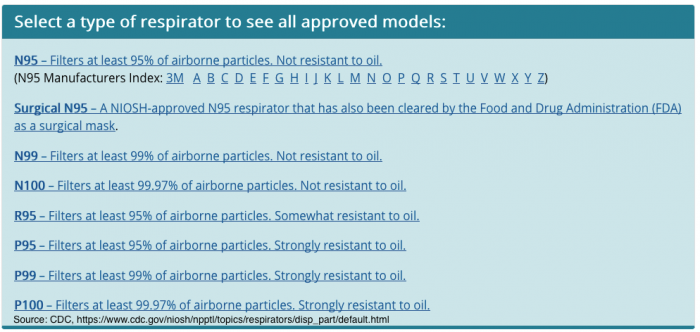
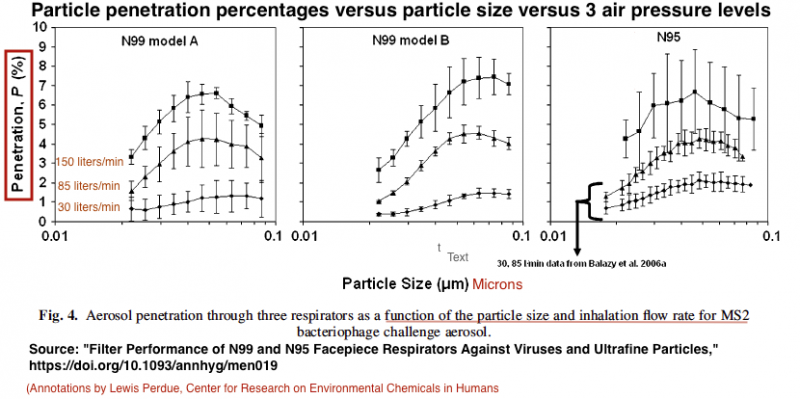
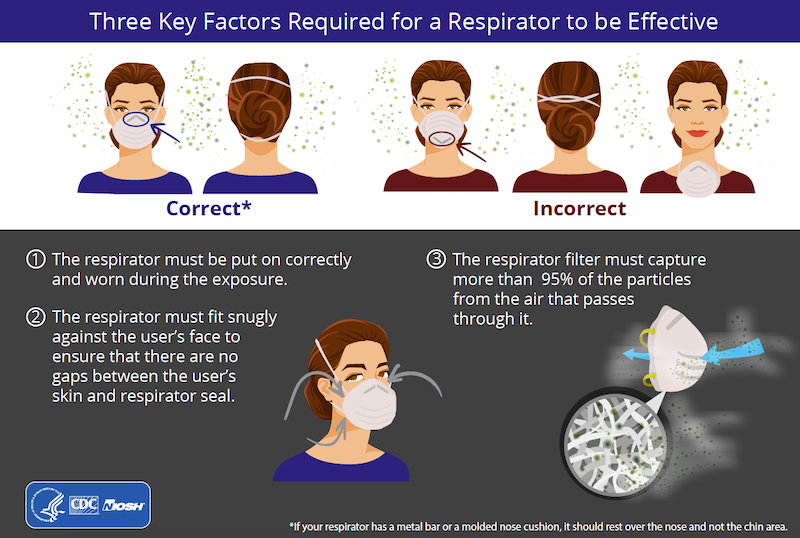
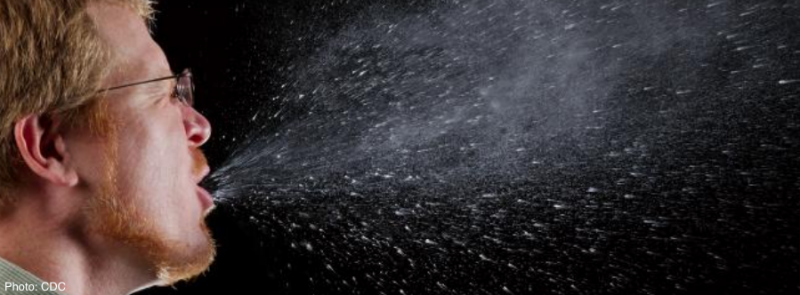
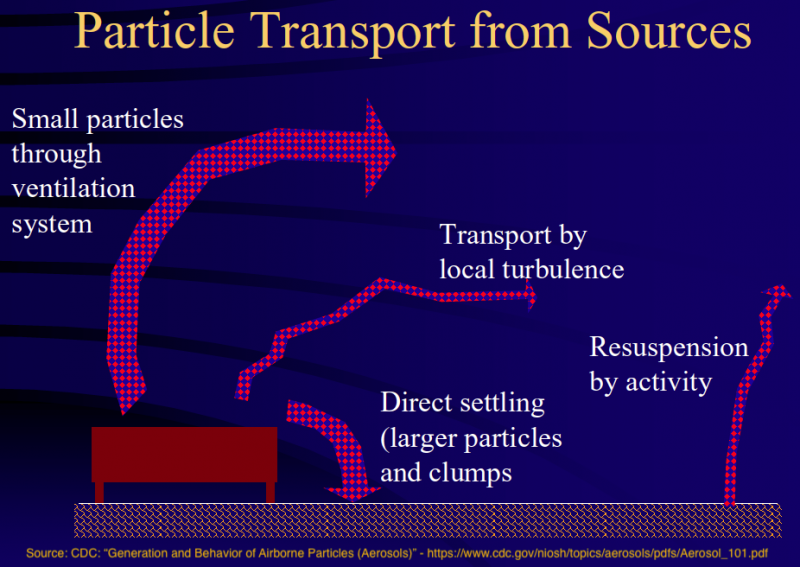
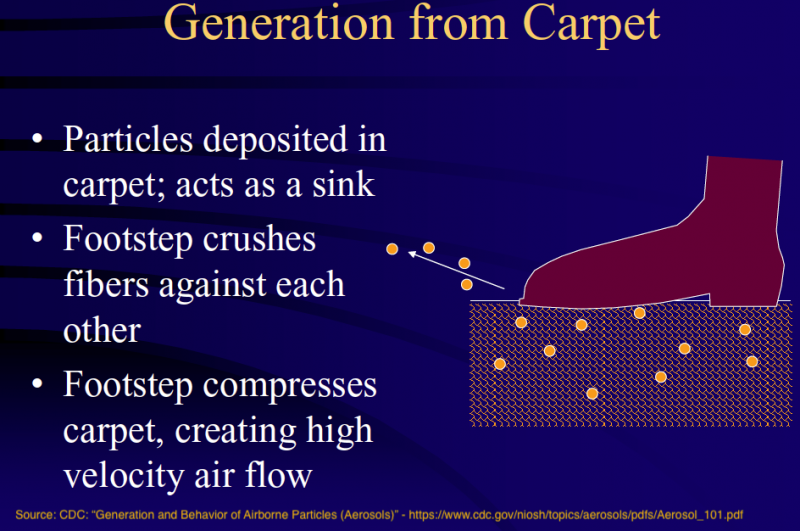
Lewis is a breath of fresh air…his work passes the resistance of the most committed conspiracy theorist.